Blog: Theory vs. Practice
Diagnosis is not the end, but the beginning of practice.
› How Valuable Is Today's $5TN Artificial Intelligence (AI)?
I have long been asked by friends and third-parties to engage a conversation with the AI Chatbots (presumably to shame them or to learn how great they are). This is my first modern AI Chatbot discussion for 3 simple reasons:

- I had no doubt about the outcome – so why bother?
- the fake-AI bubble has turned into outright systemic fraud,
- the guilty (after having been paid by armies to misuse unattended AI to illegally kill targets) is trying to enforce it as a government policy tool, or even worse, as a replacement for government administration.
Having followed "AI" for 45 years, you won't be deceived as I won't repeat a single argument of my (worth reading) 2023 take on fake-AI.
I have seized Elon Musk's invitation to "Just Grok It" because the richest bilionaire on Earth has demonstrated an unparalleled talent at turning an open-source AI into incredibly profitable recurring public-private contracts (soon SpaceX will put ever-obsolete AI hardware in orbit, a very juicy business model).
› The Hidden (Deadly) Costs of De-Correlating Price from Value
All that glisters is not gold.
Billionaire venture capitalist Marc Andreessen has recently stated:

"You're probably not going to get the bicycle manufacturing plant back that's going to build bicycles the way they existed 40 years ago. [...] What you actually want is you want to be making electric bikes, which are much more sophisticated physical artifacts that involve batteries and computers and chips."
I agree on the strategy but I disagree on the execution – because ever-growing complexity (an excremental process lacking a clear and sustainable vision for progress) is bad, not good.
Don't attempt to copy China – disrupt it:
I want a cheap, subscription-based, light, reliable, infinite-range battery-less bicycle – not a fragile, hackable, expensive, clunky smartphone on wheels obsolete within 2 years and requiring periodic battery replacement...
› HOW-TO: Load-Balancing – Best Ways Explained, DNS Configuration Example
Many among us believe that they know the answers... but some might learn something and save a lot of money. First, let's review what problems load-balancing is expected to resolve, and what features are added as a bonus:
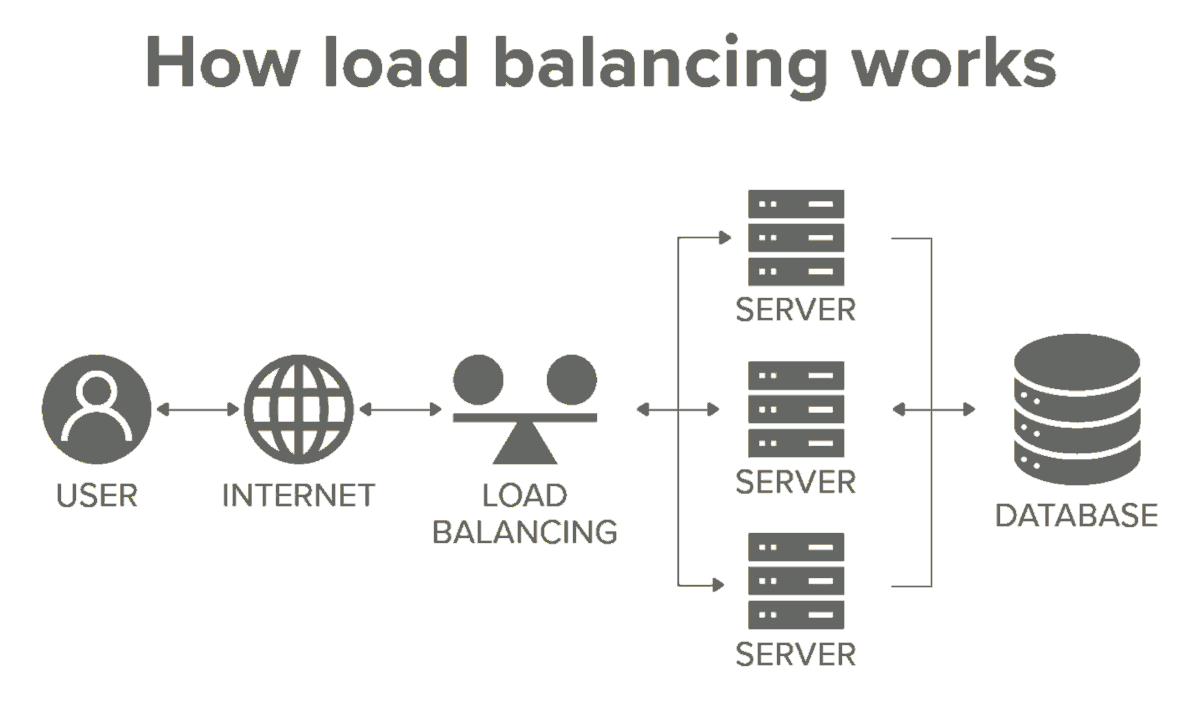
- scability, distributing the load to backend servers,
- fail-safety, continue despite backend maintenance,
- better performance, lower latency (cache, pick fit backend),
- better security, hiding and protecting backend servers,
- heath checks of backend servers (pings, response time),
- offloading: TLS termination, caching and compression.
There are certainly vendors offering more extra-bonus features, but let's focus on the main purpose of a load-balancer reverse-proxy.
1. scalability: serving many clients, most of them idle (pausing to read contents).
› What about the Zig programming language?
A friend sent me this Youtube video. I have found this small article interesting (and Wikipedia claims Zig was created in 2016) so I wondered what prevented it from making progress. I have watched the video for an hour (more than half of the whole thing).

First, like many others before it, Zig claims to be "better than C". So we will go through its claims and my view on their value.
Second, the founder seems to have a passion for performance, but their project goals might need a better defined focus: beyond getting paid to use and re-write existing tools, what are they really trying to achieve – and where is the value for users?
Is it worth spending time on it? If not, why?
I will try to address all these points in this article.
› How Hosting Companies (and Data-Centers) Can Exist?
While individuals and small-businesses buy, for themselves, relatively low quantities of hardware and energy, datacenters mutualize the costs of all their customers, so they have more purchasing power and can negociate better deals (in taxation too). Money calls money – but where does money come in the first place?

The answer is funding, mainly from banks (knowing that datacenters will pay back their loans with public contracts). So banks create the money used by large companies to build the infrastructure they need – always with ample public-sector assistance like generous subsidies, decades-long tax exemptions, new roads, new telecom investments, almost free land, cheap access to cooling water, new power-supply capacity (nuclear plants are on the rise), etc.
If, unlike them, you are not constantly-funded (nor get subsidies and tax breaks), then you cannot afford to replace your hardware every two years – you need to absorb the acquisition costs, and to limit the recurring costs as much as possible.
In contrast, the GAFAM fake-AI bubble (2025: $2.3T, 2024: $1.7T, 2020: $469BN, 2015: $0BN) keeps enjoying infinite funding despite a 500% debt to equity ratio, despite AI Capex payments requiring over $1T in new debt by 2028 and despite ample creative accounting tricks – hence OpenAI, maker of ChatGPT (with $13BN in revenue enjoying $1.4T in commitments) now asking... massive government subsides. Oops.
Update: the U.S. White House AI and Crypto Czar first claimed that their shareholders will regret having trusted the crooks:
"There will be no federal bailout for AI. The U.S. has at least 5 major frontier model companies. If one fails, others will take its place."
David Sacks @DavidSacks 16:52 UTC · Nov 6, 2025
18 days later, he anounced a bailout – it's now official, the ever-hyped unprofitable GAFAM ventures are "Too Big to Fail":
"According to today's WSJ, AI-related investment accounts for half of GDP growth. A reversal would risk recession. We can't afford to go backwards."
David Sacks @DavidSacks 17:34 UTC · Nov 24, 2025
As the best-funded companies in History, we are told that the GAFAM have the utmost morality standards. Yet, according to Reuters, Meta/Facebook "internally estimates that it shows users 15 billion scam ads a day generating $7BN a year". Oops.
Zero-Hedge, a financial journal, noticed that the GAFAM extravagances fuel public-debt: "continued growth of federal debt and Fed-created inflation will lead to a major economic crisis" as "the fiat money system facilitates government growth at the expense of the people's standards of living and liberty". Tip for governments: deprive the GAFAM from all public contracts, subsidies, loans, tax-breaks, legal leniency, etc. – and you will restore fair competition, and save your economy and the taxpayer at the same time!
The ever-growing operating costs (energy, bandwidth, floor space, norms, standards, regulations, pointless inefficiency, complexity, incompatibility, and vulnerability) lead to inflation (an "invisible tax") and the lack of alternatives explain today's gold-rush for new datacenters: no small-business can compete in this area.
Certainly not with the tools we are supposed to use.
But Global-WET (a 2014 prototype was presented to the Munich Security Conference in 2019) would turn energy and telecom exclusivity (fossil fuels, nuclear plants, energy grids, satellites, etc.) into mere commodity-markets directly available to the masses, even in the most remote places on Earth (as everyone would then be able to operate on a decentralized basis).
And a G-WAN 450 times faster than NGINX is like a new 135,000 mph car facing 300 mph "race cars". At 135k mph the "standards of excellence" are irrelevant: aerodynamics, breaks, suspensions, chassis, tires, stability and body control – all must be redesigned. This takes time, but there are groundbreaking new opportunities:
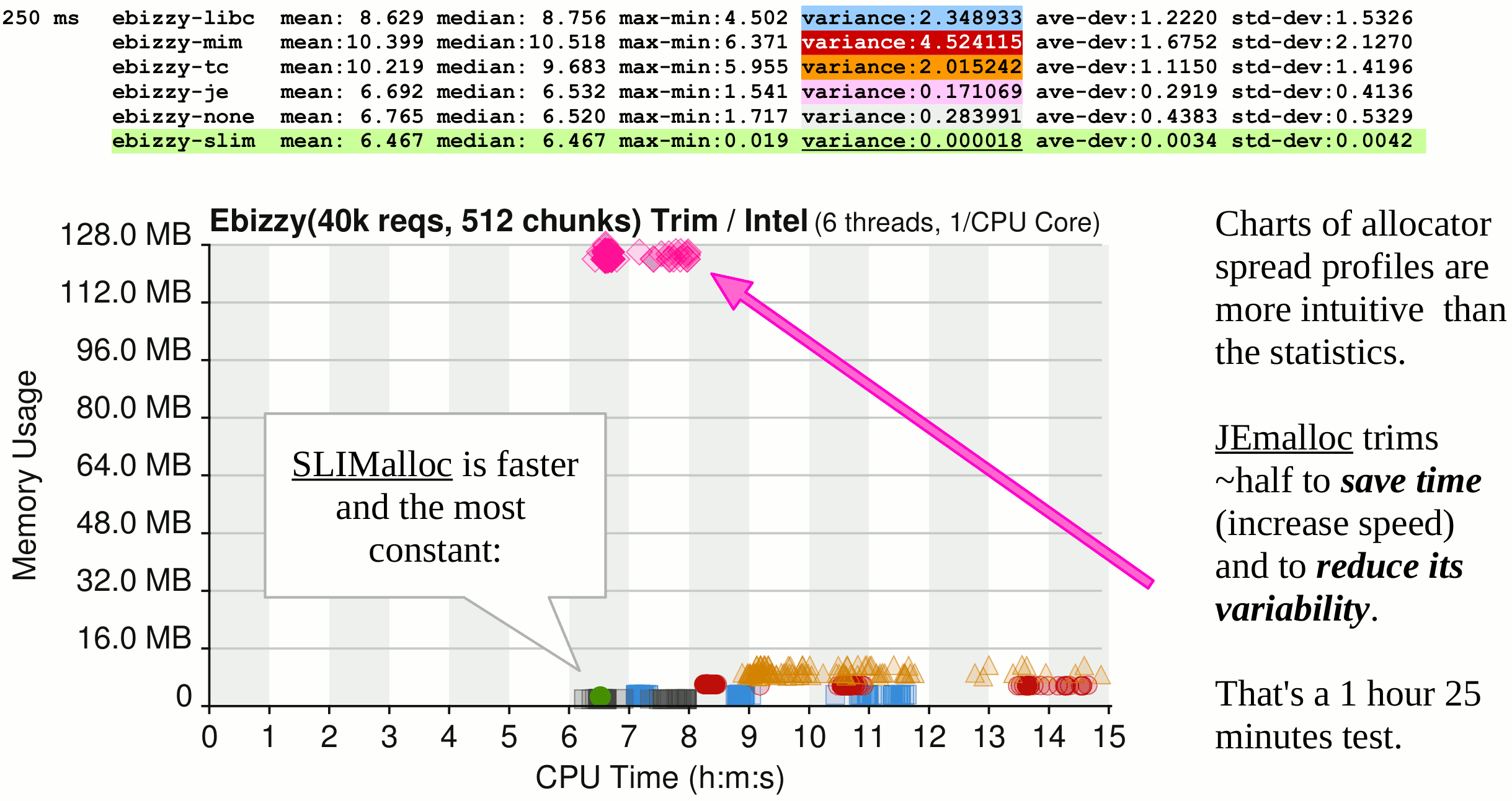
And SLIMalloc is censored by Microsoft (suspending TWD's LinkedIn accounts) and by a former DARPA manager (now CTO of a DoD and GAFAM cyber-security contractor) on Wikipedia.
Economists call this "market resistance" (that is, governments-endorsed illegal anti-competitive practices).
It happens when Finance has the power to dictate public policies. Before it was stolen by private interests, monetary-creation was a State power. The fix is to get back this stolen privilege.
As you can see, the economic and technological landscapes are complicated because the lack of (local and global) progress is not always due to the mere lack of funding: the financial sector wants to keep a monopoly on everything, so that we all are reduced to the state of passive consumers depending on fragile, humongous, eye-wateringly expensive infrastructures (the kind that requires massive private-funding and public-sector cooperation – both being out-of-reach for the 99%).
Officials are often loth to decentralise the power supply for fear of losing political control.
That's my first blog-post without a "Read more..." button.
› 🔥 How Cloudflare sends DDoS attacks to G-WAN since Jan. 2025 – and Why
The first thing to remember about DDoS attacks is that very few companies can afford to do that openly in total impunity, so the bad guys often use proxies (or a mirroring effect) to mask their true face.
The second thing is that most attacks serve a purpose and therefore are more effective when silent – for example, they are crafted or chosen to be invisible in HTTP server log files.
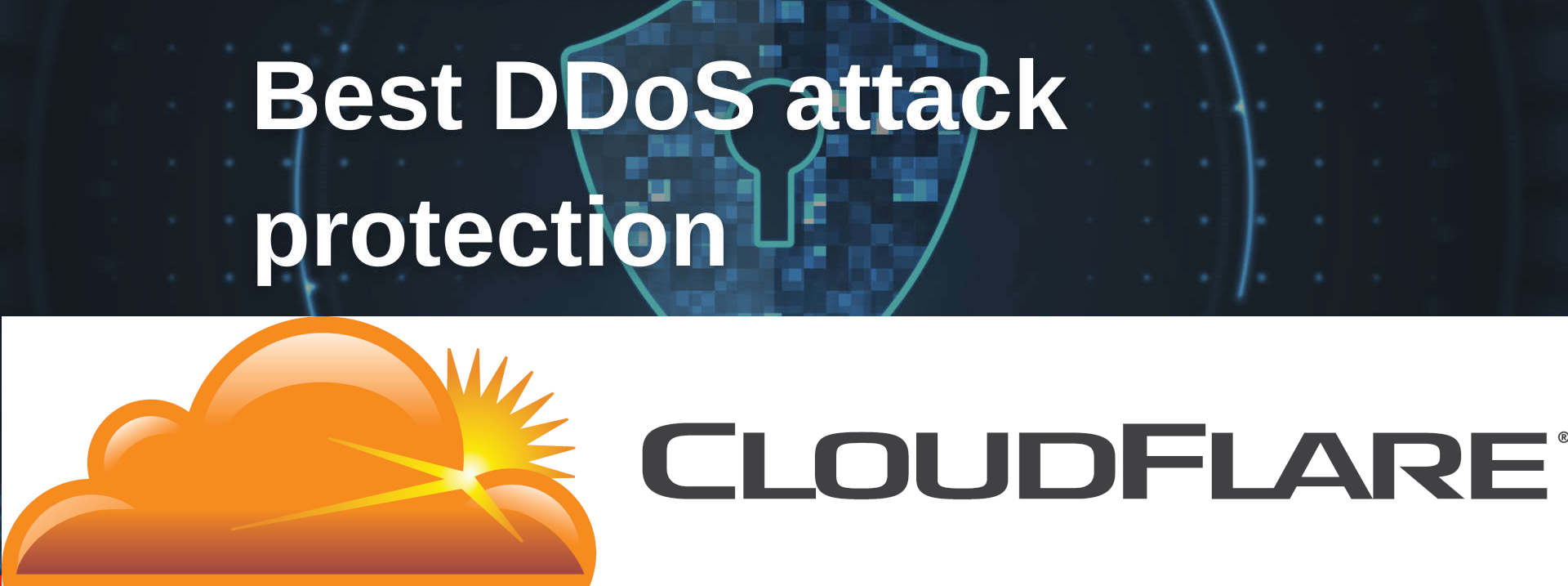
The third thing is the motivation. Even if you enjoy the required infrastructure, DDoS (Distributed Denial of Service) attacks require time, energy, and... they may bite-back if noticed.
So anyone considering sabotage should carefully weight its costs-benefits balance (in potential monetary and reputation damages) before launching a DDoS attack lasting... months.
More than a decade ago, I have contacted IBM Germany (the APACHE HTTP server was created by IBM, a server hardware manufacturer) which robot was repeatedly connecting to G-WAN without sending any request. They have swiftly acknowledged the problem and corrected their program.
I knew about this issue because OS kernel resources exhaustion was among the first attacks made against G-WAN in 2009, usually from many anonymous servers hosted in data centers.
Unfortunately, Cloudflare states on its website that it will only answer "abuse claims made by government agencies".
So, our only available option is to document the Cloudflare attack, and, since Cloudflare has designed its DDoS attack to bypass the APACHE, NGINX and HAPROXY WAF (Web Application Firewall) defenses (made absolutely pointless here) and to escape log files (observability and reporting), I will explain how to detect/report it and how to defeat it.
If it's happenning to me, it can happen to you, therefore this information might be useful.
› G-WAN's Value: 450x Faster, and C/C++/JS/PHP are Legal again ("memory-safe")
Does security finally matter? PHP and JS (written in C/C++ and not "memory-safe") are endangered by an executive order:
US President Joe Biden's administration wants software developers to use memory-safe programming languages and ditch vulnerable ones like C and C++.
Only Rust (funded by the GAFAM) would be allowed (due to international regulations) despite Rust created with C/C++, Rust not being "memory-safe" (search for "memory"), and Rust relying on memory-unsafe syscalls written in (you guessed it)C/C++.
Under the flawed logic of ever-stretched fallacies justifying administrative transfers of wealth from the masses to a few ever-growing industry players, this ban should include everything written in C/C++ (Rust, Windows, OSX, Linux, Android, all Web browsers, Java, JS, PHP, OpenSSL, NGINX, etc.) – and almost everything written by everyone for the past 50 years.
Only G-WAN+SLIMalloc have escaped this trap: G-WAN and its servlets are "memory-safe", an objective security criteria.
The number of vulnerabilities is also an objective code-quality indicator (from the U.S. gov. database of vulnerabilities):
NGINX: 248 vulnerabilities (since 2004, click the link for the current count of CVEs, Common Vulnerabilities and Exposures)
G-WAN: 0 vulnerabilities (since 2009)
This is despite G-WAN JIT scripted servlets (since 2009) which immensely enlarge the surface of vulnerability as compared to NGINX, that only started recently to add basic scripting to generate dynamic contents (via slow IPC/inter-process communication instead of loading the language runtimes like G-WAN – which is much faster, but far more difficult to do safely).
That was for 2009-2020 when G-WAN and NGINX relied on the same GLibC that SLIMalloc has proved, in graphic details, so unsafe (yet, surprisingly, a bit safer than Microsoft MIMalloc, Google TCmalloc, and Facebook/Meta JEmalloc which, don't ask me why, neglect to do the very basic checks done by the... 38-year old GLibC).
A clear past CVE record is a notable feat for a Web Application Server, but adding some sustainable certainty is certainly better:
SLIMalloc (a memory allocator) secures G-WAN, its servlets, and the loaded languages runtimes and libraries by:
(1) not introducing memory-allocation vulnerabilities (unlike all others),
(2) checking if accessed memory is under/over-written (all others don't bother),
(3) blocking and reporting memory-violations – without crashing the program (yet another exclusivity).
SLIMalloc (2020-2023) makes G-WAN safer than NGINX – and even safer than the so-called "memory-safe" languages (including Rust, which itself already had memory-safety vulnerabilities) because, unlike SLIMalloc, Rust flatly ignores the memory-violations originating from the OS (usermode and kernel) and third-party libraries... written in C/C++.
This is G-WAN's objective, heavily tested security published on ResearchGate – a clear improvement of the "State of the Art"... immediately censored by Microsoft (my LinkedIn account is 'suspended' so it's invisible to all, and logging works but then access is denied: I have provided many times the requested ID without ever seeing any followup) but also censored on Wikipedia by the CTO a 'top of the line' Facebook and U.S. DoD Cyber-Security contractor (desperately trying to hide his identity behind several fake accounts).
Now G-WAN's security has been explained, let's focus on objective reproducible performance. And, to make sure that G-WAN would not be criticized for having done cherry-picking (like others), we have used wrk2, a slower, more accurate version of the wrk benchmark written by... the NGINX team.
Why is wrk2 any better than wrk to accurately measure performance?
wrk sends a new request only after it has handled a server reply. By not tracking its own request rate, wrk fails to report slow, high-latency server replies. This is what the wrk2 author has properly named wrk client and NGINX server's "Coordinated Omission". Servers can't reply faster than the speed at which clients send their requests, and all the clients I have seen are G-WAN's bottleneck.
With G-WAN v17.2.7, wrk requires days to run a single "wrk -t10k -c10k http://127.0.0.1/100.html" test run... because wrk is unable to swiftly process the 242m G-WAN RPS.
The same NGINX v1.24.0 test runs in 10 seconds because wrk can handle the tiny 550k NGINX RPS on time. With such a tiny number of concurrent server replies, the slow wrk client does not need days.
In contrast, wrk2 sends requests at the user-supplied constant rate to the server (which will fail with I/O errors when overwhelmed). And wrk2 calibrates threads for 10 seconds (versus wrk's 0.5 second). The result is slower RPS scores than wrk, albeit more correct RPS and latency reports.
Since wrk2 sends requests at a constant-rate (unlike wrk which waits for having handled server replies to send new requests), wrk2 will stop the test after 10-second, not days – even with G-WAN (which is much, much faster than wrk and wrk2).
That's how G-WAN performance is objectively measured and reproduced (scientists create and use benchmarks for a reason). Using the wrk2 NGINX testing tool on localhost or a LAN is "not the real world": it lacks the large Internet network latencies and users reading a page before visiting another page.
But, since both servers are event-based, if you let G-WAN using Internet-sized timeouts then it will handle idle connections just like NGINX (which also has to use proper timeout values). Claiming that NGINX is able to stack more idle connections than G-WAN is false – unless you set NGINX with a large timeout and G-WAN with a small one, to force it close idle connections earlier.
When vendors revert to fallacies (after far more informative comparisons were furiously censored), that's not a good sign:
- NGINX "capability to handle many connections simultaneously" (500k for NGINX versus 240m for G-WAN...)
- "NGINX has a strong security track record" (with hundreds of vulnerabilities versus... zero vulnerabilities for G-WAN!)
- the "steeper [G-WAN] learning curve" (despite a zero-conf. G-WAN – compare that to the arcane NGINX configuration files)
- "G-WAN is a high-performance web server focusing on C scripts" (C and 17 other programming languages: JS, C#, PHP, Java...)
- "G-WAN primarily focuses on C/C++, but with certain tweaks, other languages might be executed" (the "tweaks" are just to install the language runtimes – then you can "edit and play" G-WAN servlets without any configuration!)
NGINX lacks G-WAN's (1) "edit and play" servlets in 18 programming languages and (2) "edit and play" contents/protocol handlers. So G-WAN developers can port NGINX modules to G-WAN – but NGINX has yet to offer anything close to G-WAN's "edit and play" servlets and handlers.
That was a long introduction – as I have for the first time (in my blog) presented the technical arguments before the question.
So, what was the question?
› How to Choose a Multicore CPU in 2025 – and How Much it will Matter
When I was young, CPUs were single-core, and the CPU frequency was an indicator of its speed. As the frequency was doubling every 2 years, the code execution was also doubling (sometimes a bit more thanks to new CPU instructions). The faster the CPU frequency, the better – things were simple:

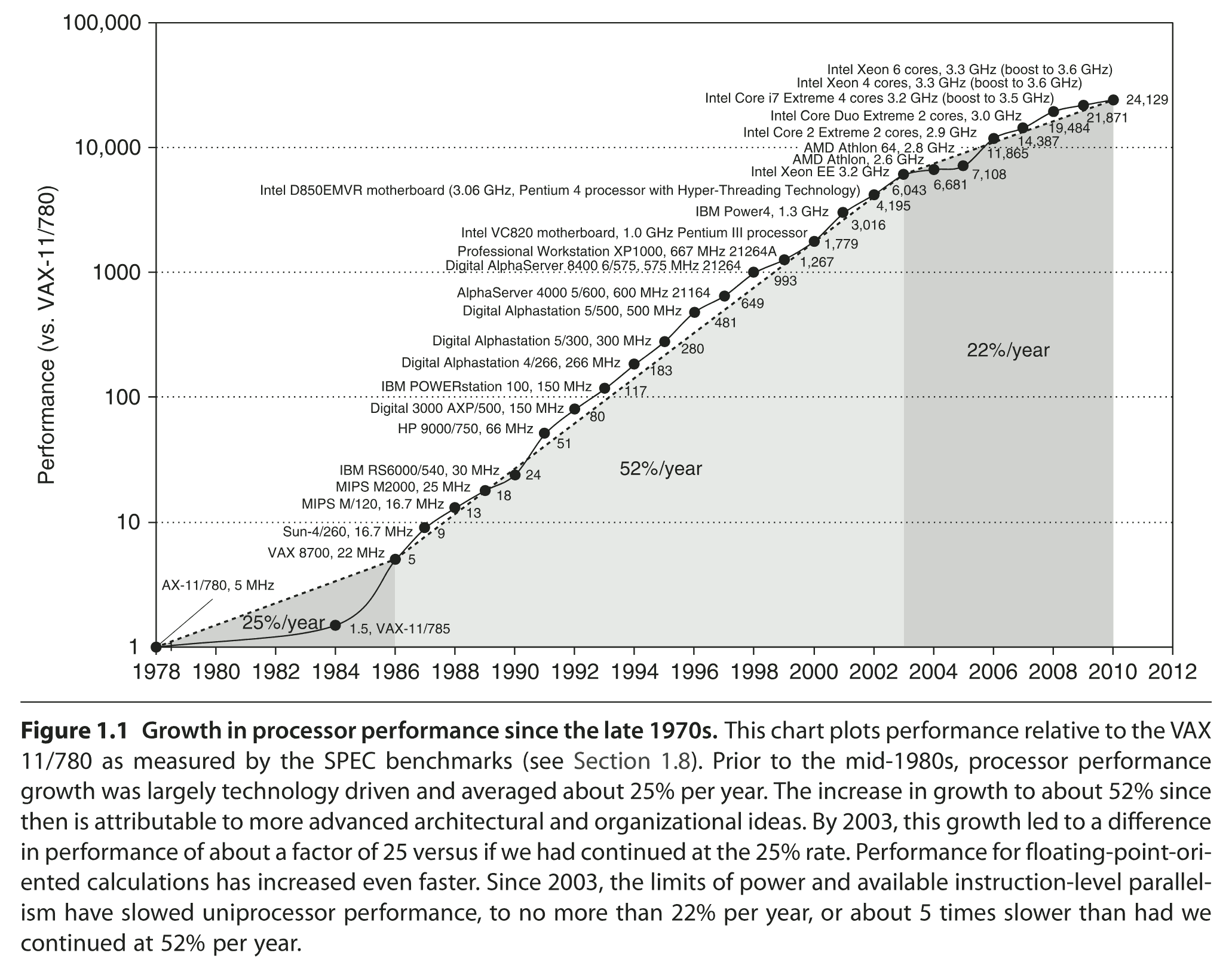
After year 2001 (and the CPU frequency halt), things became more difficult because CPU vendors started to market multicore CPUs under names that were no longer related to their capacity.
Today, larger reference numbers do not necessarily imply better performance: for example, there are Intel i5 or i7 CPUs that are faster than some i9 or Xeon CPUs.
CPU frequency remains a relevant criteria – but since CPU frequencies no longer grow beyond the 5-6 GHz limit there are other important metrics to consider.
Higher clock speeds imply higher energy consumption, that's true.
But CPU "governors" (powersave vs. performance) and a user-defined variable clock-speed range (from 800 MHz to 5500 MHz for my i9 CPU) let you decide how much your CPU will consume (so a larger range is more desirable).
In 2009-2024, G-WAN was benchmarked on the 2008 Intel Xeon 6-Core that tops the charts on the left.
Purchased in 2024, my 2022 Intel Core i9 is 8.36 times faster overall, and its processing speed per Core (or thread) is 4.07 times higher than for the 2008 Xeon.
So the problem that everyone is facing is... how to navigate the hundreds of CPU references to pick the CPU you need?
Is it better to have many Cores – or to have less CPU Cores and a higher CPU frequency? Are there other criteria to take into account?
For Desktop machines, this maze is further obscured by the fact that PC vendors may forcibly add a (high-margin) graphic card... that is redundant with your CPU features (my i9 CPU embeds an "Intel Corporation Raptor Lake-S GT1 [UHD Graphics 770]").
Unless you need a GPU (my i9 runs 3D video games effortlessly), a PCI 3D graphic card is pointlessly consuming a lot of power.
We will resolve these questions, explain what are the gains, and how to reduce your purchase and operating costs... showing also how a server "status" page may help.
› G-WAN HTTP server @ 1.05 Tbps is 4.1 faster than mere TCP servers @ 261 Gbps
The same engineer that told me about WRK2 in 2024, has later suggested TCPkali to benchmark G-WAN in 2025.
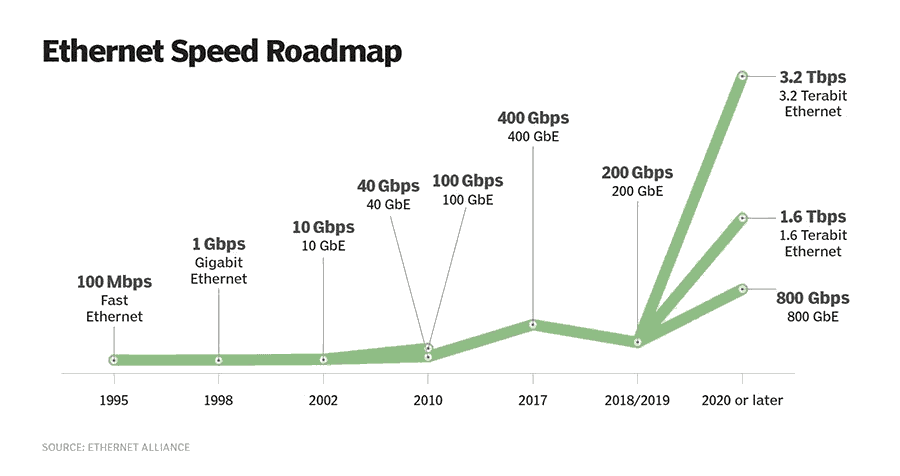
While both tools are relevant, they have limits that G-WAN has revealed.
Why? Just because it was the only server able to push WRK2 and TCPkali beyond their comfort zone.
And since these limits may generate absurd values, it makes sense to find how they can happen in order to recognize and exclude them.
This is also pertinent in the real-life, that is, if you care about diagnosis, monitoring, or capacity planning.
For example, if you blindly believe WRK2, you will (incorrectly) state that:
– "G-WAN requests have a maximum latency of 3.96 seconds... in a 5.5m HTTP requests G-WAN test lasting 32.18 milliseconds."
(obviously, there's no possible way to have any request last more than 32.18 milliseconds in a 32.18 milliseconds test)
And if you blindly believe TCPkali, you will (incorrectly) state that:
– "G-WAN HTTP/1.1 is much faster than the TCP protocol (despite G-WAN doing HTTP parsing, validation and formatting)."
(obviously, there's no possible way to have any TCP transfers go beyond the real TCP bandwidth limit of the system)
Of course, both statements are ridiculous and can only be false. But it's very easy for the distracted to be tricked. In this two-step post, we will explain how such obviously wrong numbers can be reported by otherwise trustworthy tools.
And comparing HTTP to TCP performance demonstrates that G-WAN is a so much better server that it is more than 4x faster than mere TCP servers. With 25.6 Tbps connectivity already available, relying on obsolete servers like NGINX wastes a lot of money.
› How G-WAN went from 850k RPS (in 2012) to 242m RPS (in 2025)
Wonder why China leads Big-Tech? U.S. and European products are all the same: not performing, nor safe, not innovating – yet a few (financially-dominant but technically mediocre) vendors get all the business. Copy & paste has replaced R&D (for the sake of infinite debt-financing growth). Jobs are disappearing, and the ones that remain are boring and degrading. I will show here how we all can (and therefore should) do much better.
After 45 years of engineering, I have seen a lot of organizations, platforms, people and programs. I always felt there was a fundamental difference between people (and therefore their speeches and works). I believe that it explains how G-WAN has evolved while all others have stagnated: NGINX 2025 is slower (on 8x faster 2022 CPUs) than G-WAN 2009 (on 8x slower 2008 CPUs)!
In 2009, I wrote G-WAN because none of the available HTTP servers were matching my needs. When I had something to publish (faster, simpler, more reliable) I shared my work as a freeware with my views about what was (and still is) wrong elsewhere.
In 2025, G-WAN (242m RPS) is 453 times faster than NGINX (555k RPS) with 10k users, an uncached 100-byte file, on an Intel Core i9 CPU. With such energy and hardware specs, my $1.5k PC is a Cloud.
In 2025, Wikipedia states that Google uses 2.5 million servers to serve an estimated 40m searches per second – multiplied by 5 as "4 parts responds to a part of the request, and the GWS assembles their responses and serves the final response to the user" said Google in a 2003 report.
200m RPS (5 * 40m RPS) served by 2.5m servers (200m / 2.5m = 80 RPS per server. The potential energy and hardware costs are gigantic, hence the GAFAM now buying nuclear plants to cope with the increasing traffic and operating costs!
Who needs scalability? Startups? Internet, Phone & TV networks? Data centers, Web hosting, SaaS and Could operators? Video streaming and Payment platforms? The GAFAM (operating systems, Web browsers, search engines, social networks)? Government administrations? Stock exchanges? Clearing houses? Banks?
Already we can see that some of these players have an incentive at promoting inefficiency (and censoring efficiency) to preserve (or grow) their revenues – at the expenses of their customers (the largest of all being governments, that is, the taxpayer).
If you can't (or don't want to) buy nuclear plants, there's G-WAN.
› Artificial Intelligence (AI), the Great (Dis)Illusion
I have been contacted and requested to write an article about AI – and since I did not get news from them I have published it here (they have finally published it, more than a month later).
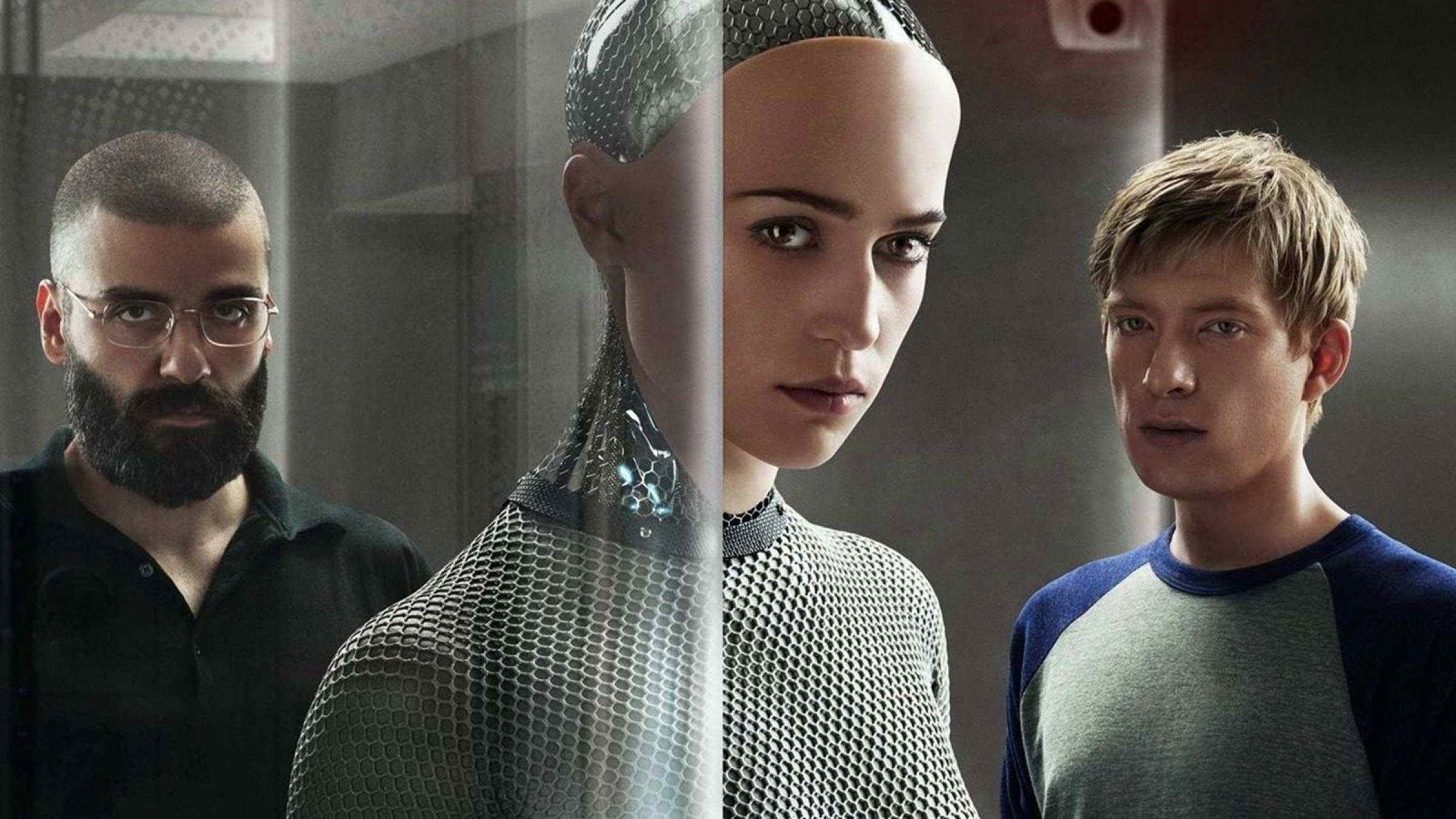
In contrast with the disastrous quality of the articles that are enthusiastically published to promote AI, my text was comparing today's instruments to those in use 30 years ago, and introduced new concepts of the kind so badly missing to make progress.
Having followed the "AI" players for 43 years, I indeed have some insights to share.
Theoretical and practical arguments are presented that are much needed to make progress in a discipline that, a few months ago, was in a state of "freezing" according to its specialists.
That was before a new wave of hype erased this "perception" with ChatGPT (a chatbot, something called Eliza 60 years ago) as the only word worth spelling in town... despite world-class experts having criticized ChatGPT in graphic terms:
Given the amorality, faux science and linguistic incompetence of these systems, we can only laugh or cry at their popularity. ChatGPT exhibits something like the banality of evil: plagiarism and apathy and obviation.
So, if you are wondering what "AI" is in reality, or if you want to discover new ways to make (real) progress, keep reading to discover my article first titled "Making an Artificial Super Intelligence (ASI)".
› ARM "Memory Tagging Extension" (MET) vs SLIMalloc
As a designer of CPUs based in the U.K., ARM has tried to address the "memory safety" issues that the NSA, rightly in our humble opinion, attributes to the OS vendors ("their vulnerabilities") properly documented by Paul Hsieh's Microsoft Watch page.
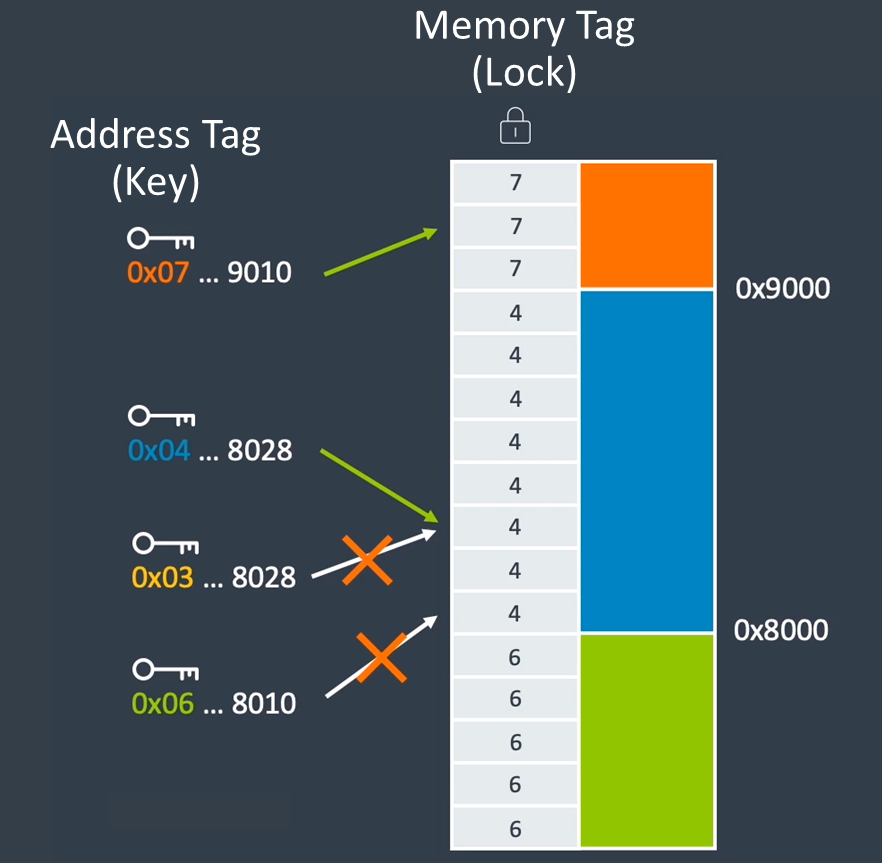
Having received a request to compare the new security features of the recent ARM CPUs to SLIMalloc, we have searched and finally found a description of their method.
ARM has designed MET with the assistance of GOOGLE but since most of the published documents are marketing nonsense, it requires some time and dedication to find enough facts to evaluate their combined works.
As the left picture suggests, this is a coloring scheme. For this to work, all memory accesses MUST be made from an address that belongs to the SAME COLOR used by the whole memory area we attempt to reach.
ARM MET access memory violations trigger a CPU-generated fault crashing the process (unlike SLIMalloc which gracefully blocks, documents and recovers errors).
Do ARM CPUs boosted by MET make our OS and applications safer (and run faster) like SLIMalloc does? Let's have a look!
› TRANSHUMAN, AI, PLAGUES, 5G/6G, WARS, NET-ZERO, ENERGY CRISIS, INFLATION
In those troubled times people wonder what 'transhumanism' aims for, and what the motivations and pursued outcomes are. How comes you can watch forever the best experts give you "answers" – and still wonder what this is all about? Either they don't understand the matter – or they don't want you to understand it. In both cases, that explains why their painfully long and boring speeches lead nowhere.

In "The Island of Doctor Moreau" (1996), Marlon Brando plays the role of Dr. Moreau, a mad scientist who experiments on animals, using a wireless kill-switch he carries as a medal on his chest to guaranty his security.
He ends eaten by his creatures after they have found how to remove the implant (today either injected or absorbed with food) used to remotely inflict pain and even death if they dare to keep disobeying to direct orders.
Obligations range from having to accomplish a given task, or taboo violations like not accomplishing a mandatory task, entering forbidden areas, or even having forbidden thoughts.
So, instead of repeating what you can find everywhere else, we will focus on what nobody is telling you.
And this must start with a simple question: Cui Bono? (who benefits?)
› The Artificially-Created Cyber-Chaos
The COVID-19 crisis would be seen in this respect as a small disturbance in comparison to a major cyberattack. We have to ask ourselves, in such a situation, how could we let this happen despite the fact we had all the information about the possibility and seriousness of a risk attack.

Did end-users get something valuable in return?
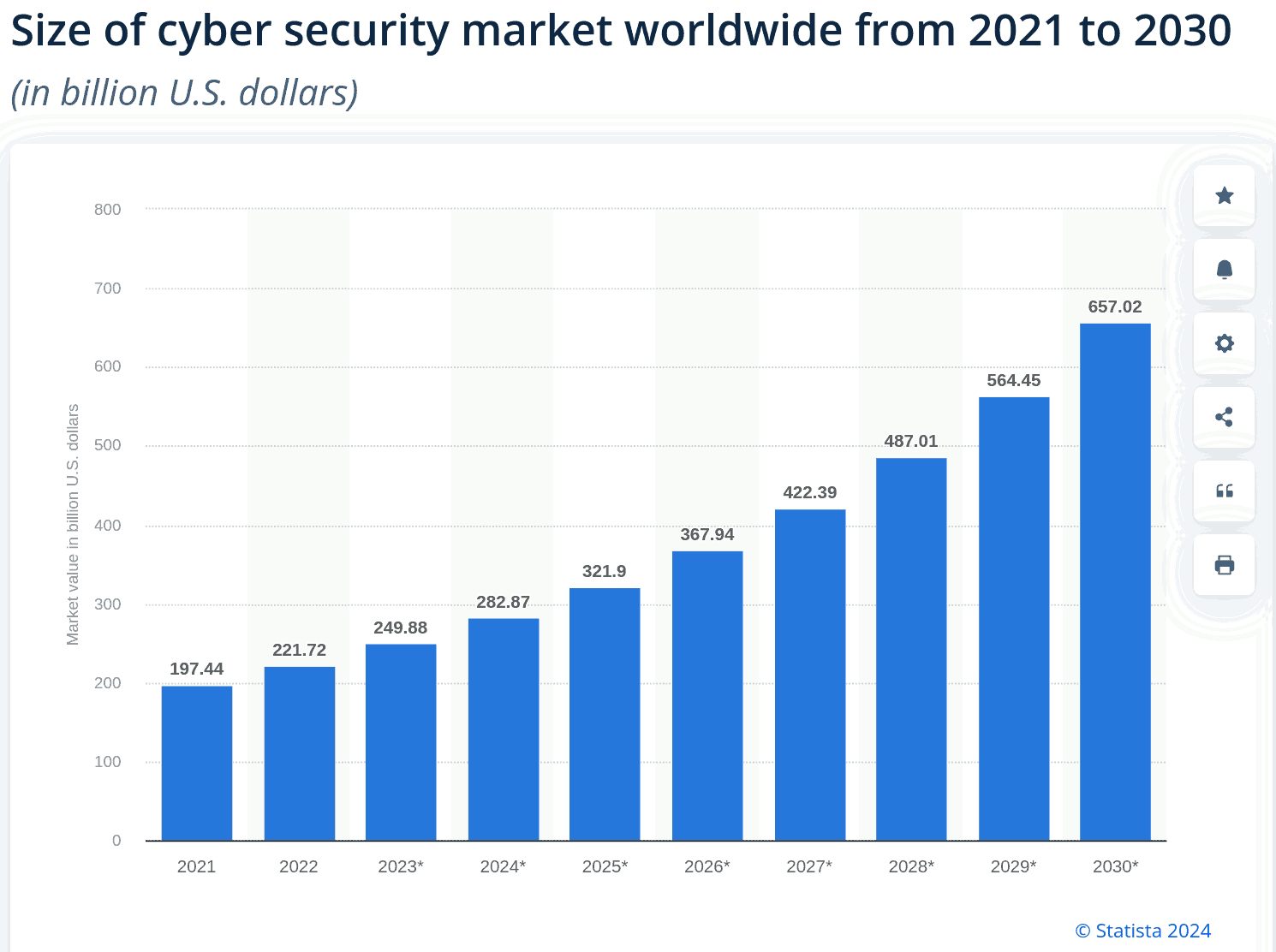
Or was it just (yet another) outright institutionalized fraud? (the taxpayer pays back the extravagant debt-financed government expenses).
Tip: the industry expects the cyber-security market to more than triple within a decade – proof that this market is a fraud: the cost of the "protection" can only grow if this "protection" creates more problems than it solves.
Only the taxpayer has to suffer – because he is the only one paying the ever-growing bills.
The Problem
Since November 2022, the NSA recommends to use "memory-safe" programming languages because:
| } |
are "memory safety" issues (due to the OS memory allocator). |
Memory issues bypass encryption, intrusion detection systems, firewalls and even Security Operation Centers – making it pointless to waste this much money in ever-failing "security" tools – at least, as long as the elephant in the corridor is not addressed.
› Academic "UNCONDITIONAL Security"... relying on (Hazardous) ASSUMPTIONS!
Here is the (Saudi, UK, and US) paper's introduction:
"Conventional cryptographic schemes based on data encryption standard (DES), advanced encryption standard (AES), and Rivest, Shamir, and Adelman (RSA) encode messages with public and private keys of short length. The main advantage of these algorithms is speed, and the main disadvantage is their security, which relies on computational and provable security arguments and not on unconditional proofs."
Note: in Academic jargon, "provable security" means that scientists are allowed to "prove" that something is 100% safe... until it is broken. Example: "RSA is provably-unbreakable"... under the (usually untold) assumption that no publicly available algorithm or machine can factorize big numbers quickly enough to compromise its security. In contrast, "unconditional proofs" are supposedly NOT relying on any assumptions (hence their value... and scarcity).

"Here we develop a physical realization of the OTP [One Time Pad] that is compatible with the existing optical communication infrastructure and offers unconditional security in the key distribution."
This patented work has been published in Nature Communications on December 20th, 2019 and they are not shy about it:
"This system is the practical solution the cybersecurity sector has been waiting for since the perfect secrecy theoretical proof in 1917 by Gilbert Vernam. It'll be a key candidate to solving global cybersecurity threats, from private to national security, all the way to smart energy grids." – Dr. Aluízio M Cruz, co-author of the study
Is this really what it claims to be? Let's have a closer look!
› World Peace Requirements
It might come as a surprise to many, but the obstacles facing "balanced" relationships are always the same, whether
the economy, finance or technology are considered because the only point that matters is "sovereignty
Sovereignty: the full right and power of a
governing body over itself, without any
interference from outside sources or bodies.
You can only be 100% sovereign or not at all:
there is no way to be "partly-sovereign".".
As Adam Smith (Scottish economist, 1723-1790) demonstrated it in "The Wealth of Nations", the "open and free markets" depend on the sane execution of "fair competition" and "Justice"... when self-discipline among government, finance, and merchants is lacking:
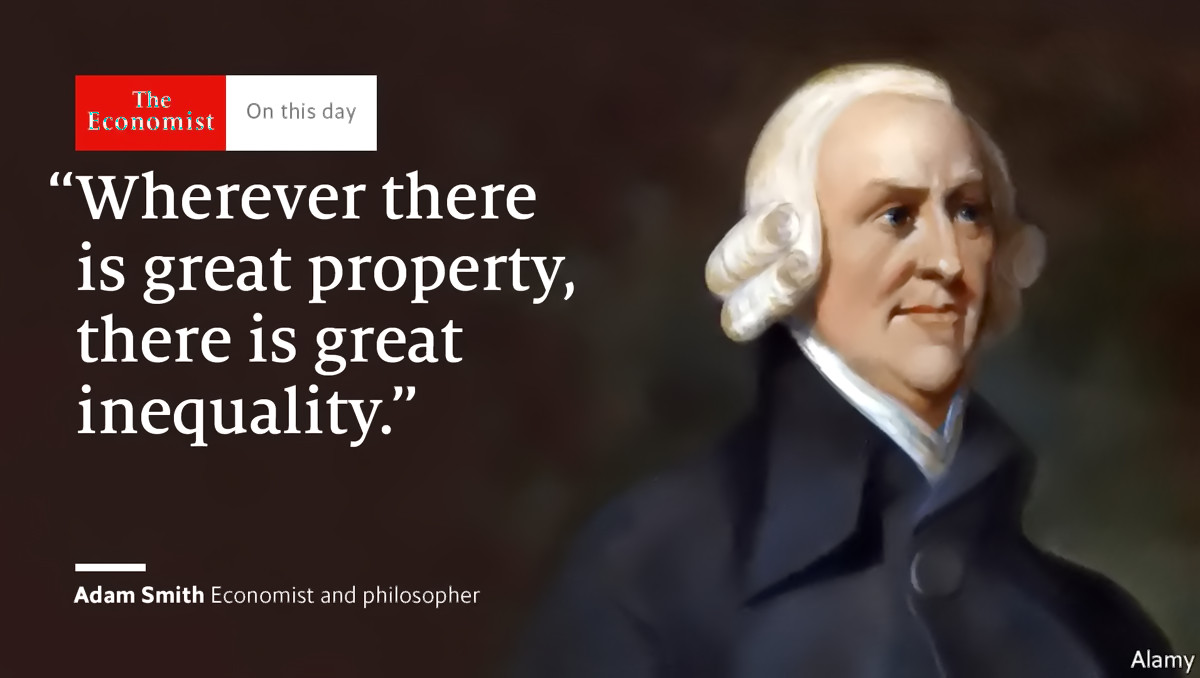
I sincerely believe that The Economist's provocative quote of Adam Smith is not the definitive answer to this old and universal problem: opposing the rich and the poor is purposely made to prevent people from spotting what matters, in reality.
Like Adam Smith, I think that market distortions are the problem rather than wealth coming from well-informed customers enjoying real choice (so they can vote with their purchases and promote true value – the core engine of true capitalism). So, in this article, I will present a way to make wealth compatible with sane competition – even in the absence of self-inflicted discipline.
To the credit of Adam Smith, such an option was not available at his time.
› "Unconditional" Security Requirements
According to Wikipedia, the "Security Theater is the practice of investing in countermeasures intended to provide the feeling of improved security while doing little or nothing to achieve it."
That helps to explain why The Economist wrote that cyber-security is a "market failure"... far before the chaos that we all see now.
Unlike "post-quantum" security relying on assumptions ("number-theoretical security assumptions", today's publicly-published quantum algorithms and the unreasonable hope that new quantum methods to break what is considered quantum-safe today will never surface), "unconditional" security is future-proof because it is assumptions-free.
These unpublished assumptions impact our daily life: Academia's formally-proven LTE "forgot" to feature packet integrity, like the formally-proven Wi-Fi "forgot" to verify the security of the protocol handshake. Both mistakes proved to be critical vulnerabilities... many years later.

The "Security Theater" is sustained by the varnish of respectability of a scientific community increasingly lacking credibilty:
Key-management is as important as data encryption because if you don't do it safely then your long-term secret encryption key will be compromised even before you start using it to actually encrypt data!
This is why, in this article, we will see what makes today's security standards fail and we will present the requirements to deliver "unconditional" security – in key-management (generation, storage, derivation, exchange) as well as in data encryption.
› 1996 Ron Rivest-prefaced Book: How "Unbreakable Encryption" Works
Today's universities teach the world that unbreakable encryption is "technically impossible", hence the ever-failing US standards enforced by international policies.
Under his own words, "the most widely acclaimed security expert in the world" contemptuously calls unbreakable encryption "Snake Oil" (he personally made me the great honor of such an email in 2013... despite a first 2008 government audit of TWD's 2007 technology).
Discuss "unbreakable encryption" publicly and myriads of supposely competent people will furiously call you a "Charlatan".

Yet, a book written 22 years ago by undisputed encryption experts explains how to write your own "unconditional encryption" ("unbreakable" in academic jargon because "assumptions-free"). The Germans have a proverb for this kind of engineered dissonance: "Lies have short legs".
"Handbook of Applied Cryptography" (780 pages) by Alfred J. Menezes, Paul C. van Oorschot, and Scott A. Vanstone, prefaced by Ron Rivest (the 'R' of RSA, Inc.):
"The current volume is a major contribution to the field of cryptography. It is a rigorous encyclopedia of known techniques, with an emphasis on those that are both (believed to be) secure and practically useful. It presents in a coherent manner most of the important cryptographic tools one needs to implement secure cryptographic systems, and explains many of the cryptographic principles and protocols of existing systems."
This book can change the life of every tech user on the planet – and even prevent wars – I am not kidding. So, if you are interested in computer programming, cyber-security, encryption, consumer payments fraud, blockchains, the security of our common critical infrastructure, or merely about your own privacy, then keep reading (and share this document)!
› What The IoT And AI Have In Common?
The IoT (Internet of Things) and AI (Artificial Intelligence) will be cataclysmic failures if, because of the lack of any effective and durable security, we can remotely interfere with, infiltrate and sabotage devices and communications, everywhere, at any time:

"It's not the IoT devices themselves that will deliver the biggest breakthrough – it's the ability to connect them to securely exchange
information and deliver it to users."
Lockheed-Martin, "How The Internet of Things (IoT) Is Transforming Modern Warfare"
As a Defense contractor, Lockheed-Martin knows about security, but The Economist's point of view is even more revealing:
"There's a market failure in cyber-security, made worse by the trouble firms
have in getting reliable information about the threats they face."
The Economist,
"Market failures - Not my problem"
"To avoid lurid headlines about car crashing, insulin overdoses and houses
burning, tech firms will surely have to embrace higher standards.
The Economist, "The Internet of things (to be hacked)"
How the better-funded-than-anyone US Defense contractors, tech and cyber-security firms can have led to a "market failure"?
› Who Innovates And At Which Cost?
PQCrypto (an EU Academic/private "multi-million Euro research project" with MasterCard and Intel on the strategic advisory board) has issued initial recommendations presenting their solution called SPHINCS to the threat for today's Public-Key Encryption (PKE), Symmetric-Key Encryption (SKE), and hashing standards:
- fully-broken: PKE RSA, DH, DSA, ECC (factoring & discrete logarithm solved by Shor's quantum algorithm)
- half-broken: SKE (halved by Grover's quantum algorithm; AES-256 provides 128 bits of post-quantum security)
- half-broken: Hashing (halved by Grover's quantum algorithm; SHA-256 provides 128 bits of post-quantum security)
PQCrypto explains that hash-based PKE (SPHINCS) is desirable because the number-theoretical security assumptions of other PKE schemes are less well-understood (each PKE family's key sizes are available here):
- Code-based systems: mainly encryption (McEliece) (some broken, others not)
- Lattice-based systems: encryption (NTRU) and signatures (some broken, others not)
- Multivariate Quadratic systems: encryption and signatures (some broken, others not)
- Hash-based systems: signatures (SPHINCS), a one-time public-key is a subset of a one-time secret-key
- Quasi-Cyclic Moderate-Density Parity-Check based McEliece (QC-MDPC) systems: "not well-studied"
- Isogeny-based systems: "not well-studied"
Finally, PQCrypto says its logo is a turtle because "Post-Quantum security is much more complicated and therefore much slower". The only sane way to contradict someone is to do better.
› Google's "Director of Engineering" Hiring Test
Recently, I have been interviewed over the phone by a Google recruiter. As I qualified for the (unsolicited) interview but failed to pass the test, this blog post lists the questions and the expected answers. That might be handy if Google calls you one day.
For the sake of the discussion, I started coding 37 years ago (I was 11 years old) and never stopped since then. Beyond having been appointed as R&D Director 24 years ago (I was 24 years old), among (many) other works, I have since then designed and implemented the most demanding parts of TWD's R&D projects – all of them delivering commercial products:
- Global-WAN (a C/VHDL distributed L2 VPN relying on a custom kernel-bypass IP stack and our own post-quantum encryption)
- G-WAN (a 200 KB application server supporting 17 scripted programming languages C/C++, C#, Objective-C, Java, Go, etc.)
- Remote-Anything (a patented enterprise network management solution, 280 millions of licenses deployed in 138 countries)
Google's representative stated that both management and up-to-date coding skills were required (a rare mix). But having exercised the former for more than 2 decades and the latter for almost 4 decades was not enough: I failed to give the "right answers". Is Google raising the bar too high or is their recruiting staff seriously lacking the skills they are supposed to rate?
Let's have a look!
› How to evaluate "Competence"?
While talking about business trends with a circle of executives, the director of an R&D center in Asia lamented about the lack of "true" competences. Intrigued about what his company could be missing I invited him to explain what he meant.
He said that, far too often, pouring 20 or 200 persons on a project made no difference in terms of innovation. While several of their R&D labs work in different countries, all seem to produce similar results, and this is like an invisible wall which cannot be broken, whatever the investments.
This reminded me the years spent at large industry players like THALES in France or SPC Corp. in the US. Large companies often have a "postdoc" policy for recruiting R&D staff. University alumni often hire pals, people that look like them, or at least candidates with a common background.
Not willing to restart the ancestral debate between engineers vs academics, I promised to send him a small test that would both illustrate the nature of the problem – and a quick way to help resolving it.
At this time, I did not anticipate the scale of the feedback – nor the impact that such a benign confidence could have provoked.
› What makes "Disruptions" Successful?
The short answer is "time". If an innovation is really useful then everybody will eventually use it, one day. But well-known innovations may stay dormant during centuries – as long that people don't believe that doing such a thing is possible. Let's see how this happens, how different actors play in favor to (or against) disruptions, and why.
"An invasion of armies can be resisted, but not an idea whose time has come."
– Victor Hugo
Mail is a good example. We all know that it started with guys running from one point to another to deliver a message. Then horses and boats transported letters, and we got railways the telegraph, telecopies and the Internet.
But very little among us know how much innovations have to wait until they are enforced by the authorities, with enough clout to leave the state of a mere curiosity. For example, in the 18th century, French king Louis XV replaced religious, academic, and other postal services by the Royal Post, a monopoly given to the "Black Cabinet" to spy on supposedly ever conspirating people.
Electricity, seen in the sky and used by Thales (600 BC), a Greek philosopher, in experiments, had to wait until 1750 to find new insights with Benjamin Franklin, a largely self-taught researcher, 'Founding Fathers of the United States of America', Pennsylvania President, several times US Minister, slaves owner, and large-scale securities speculator (his face is on 100 dollar bills).
Soon after, Alessandro Volta invented the battery in 1800, and Michael Faraday invented the electric motor in 1821. Things accelerated then with Nikola Tesla, Thomas Edison and many others who contributed to the "Second Industrial Revolution", where electricity left the status of a near-magical mysterious force.
› What makes something "notable"?
Wikipedia presents Node as a system designed for writing highly scalable Internet applications, notably web servers. Some more quotes found on the "trusted links" give additional clues:
It's the latest in a long line of "Are you cool enough to use me?" programming languages, APIs, and toolkits. In that sense, it lands squarely in the tradition of Rails, and Ajax, and Hadoop, and even to some degree iPhone programming and HTML5.
Go to a big technical conference, and you'll almost certainly find a few talks on Node, although most will fly far over the head of the common mortal programmer.
[In contrast, traditional] Web servers are based on a client/server execution model that's bound up with operating system threading models and have inherent limits in terms of scale.
Node makes a much smaller footprint. It allocates web server resources on an as-needed basis, not pre-allocating a large chunk of resources for each user. For example, Apache might assign 8MB to a user, while Node assigns 8KB.
Walmart executives made it clear that the benefit of using Node was far greater than the risk – an assertion many other large companies (and providers of Node support systems) have been waiting to hear from a household name like Walmart.
Wikipedia, not always known for its probity, lists "trusted sources" reporting that Microsoft embraced Node. O'Reilly published two books, The Register, Forbes, and Wired relay the hype and HP and DELL are cited as users.
› How high can PHP "fly"? 88 times higher than Facebook HipHop!
PHP was not really on my agenda in 2009 when I decided to create G-WAN. Our applications are C programs, so G-WAN has first supported C scripts. But since the very beginning, people came and asked for other languages, including PHP scripts.
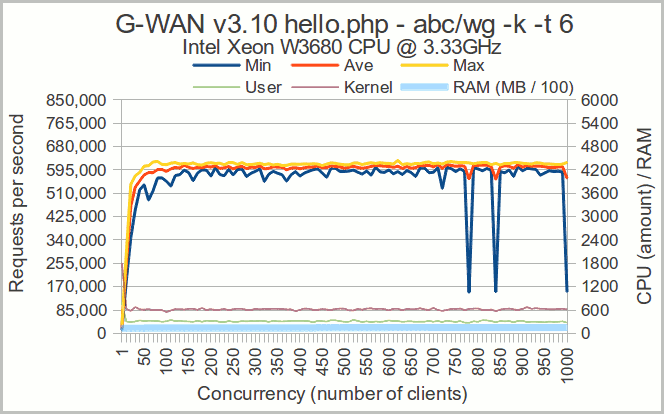
I have had difficulties to integrate Java or C# but never in the extend of PHP – despite the fact that PHP was supporting direct interfaces with C (making it easier, at least in theory, to use from C).
Friends were bogging me about PHP, and the frustration was not calmed by the official PHP distribution which cannot be both compiled and used in thread-safe mode (that's either one or the other).
Finally, that's the email of Tak, a long-time G-WAN friend, which gave me the idea that made it possible for G-WAN to support PHP.
› Scala - What makes something "strategic"?
You are used to see G-WAN saying that scalability matters on multicore CPUs. Let's hear what the European Union has to say:
"The Popular Parallel Programming challenge is the single most important problem facing the global IT industry. Without significant progress, there is a considerable risk that the underlying business model, in which hardware performance developments enable improved software which drives purchases of new hardware, will be broken. Industry giants, including Microsoft and Intel, are well aware of this, and devote considerable resources to funding research in the area.

The work proposed here describes an ambitious but coherent attempt to address the issues and consequently, if successful, would be of enormous value, both intellectually and industrially."
Putting (taxpayer) money where its mouth was, the E.U. granted 2.3 million Euros to this project aimed at tackling the "Popular Parallel Programming" challenge – despite the "considerable resources already devoted by Microsoft and Intel" in this matter.
Did the so-generous taxpayer receive something valuable in return?
› What makes something "scalable"?
Almost all Web servers and Database servers distributed today are "highly-scalable". Or so say the vendors because that's a keyword that end-users, media and search engines value as the promise for big savings.

And scalability indeed matters: that's the ability to perform well while concurrency grows. For a server, it means that satisfying one or 10,000 users must be done with a low latency (this is the application responsivity, also called 'user experience').

Let's consider G-WAN and the ORACLE noSQL Database.
This Demo will be been presented in the noSQL and Big Data sessions of the ORACLE Open World (OOW) 45,000-person event held in San Francisco on Sept. 30 – Oct. 4, 2012:
On the left, there is a photo of the session pitch taken by Alex.
The G-WAN presentation (the G-WAN-based PaaS) can be found here.
› What makes a company "perform"?
Not all startups land gracefully when the hype must leave room for results. And we have more modest shops that do common things, just much better.
When I first tested C#, that was in year 2009 on a Windows IIS server. And to say the least, I was not impressed: bloated, slow and incoherent – all in one. And talking with MSFT's director of the Web server division was as frustrating to say the least.
At this time I also tested Java on Linux. Despite a more friendly talk with the SUN GlassFish development team, having to deploy a Java Web application still chills my blood. Pointless complexity induces so much waste that it should be liable to carbon tax.
So imagine my surprise when I tested Mono – the C# implementation available on Linux – to add support for C# G-WAN scripts.
› What is "2D Scalability"?
If you provide a successful service, then you have to make your application(s) scale. There are two dimensions which can then be involved for scaling:
- horizontally using several machines, each of them running your application(s)
- vertically using several workers running your application(s) on each machine.
The second way of doing things, scaling vertically, was introduced in the early 2000's on commodity hardware (a decade ago). Despite multicore being now ubiquitous, from cellphones to Data Centers, network switches, TVs, planes, trains, boats, automobiles, laptops and desktops, there is still a wide gap as far as software development tools are concerned.
The question is not whether or not you will have to use parallelism (adding a dimension to the equation grants you access to exponential gains), the question is about how to do it to reduce costs. After all, you have paid for this hardware so not using its capabilities is quite a pity.
› How do people pick a Language?
Whether this is in their family, at school or in the street, people usually adopt the language used to talk to the greatest number of persons they are exposed to.
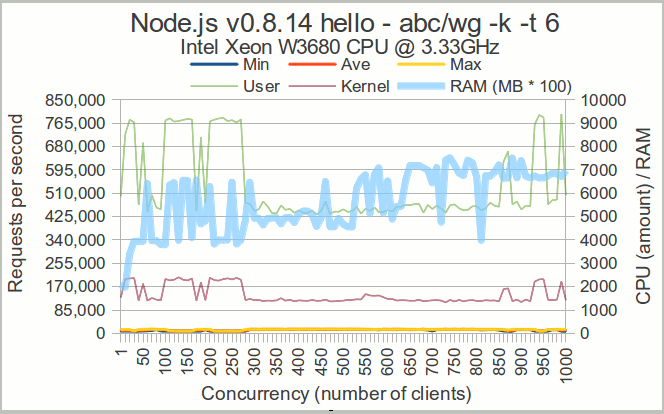
This is how first-generation immigrants see their kids forget the ancestral culture to adopt a new one.
Like mere products, languages are heavily promoted. Music, Movies, News, Entertainment programs and even Business contacts will drive more and more persons to the language that offers more opportunities than others.
At the core of the eco-system, a language is considered by governments as a strategic asset because of the Network Effect.
It is not accidental that the same is true for Information Technology.
Let's have a look at the consequences.
› What makes one deserve "(bad words)"?
When someone pointed me the 2012 forum post below, I believed that it made sense to ask people why they feel necessary to give you what they call themselves "(bad words)". The user 'Heist' registered a blog account on April 14 2012. Two days later, he posted the text below: (Cambridge Dictionary - "Heist: a crime in which property is taken illegally and often violently from a place or a person")
"You may have heard of G-WAN, a notoriously fast Web server. Other than the fact that the owner is a complete (bad word), and that it's useless to the general Web development community in its current state (due to it being written in C, and requiring primarily C to extend it), it looks like the promised FCGI/SCGI support could make it something to look out for... what do you think of it?" Posted 16 April 2012 - 05:43 AM
G-WAN runs several threads, each with their own epoll event-loop. G-WAN does not use FCGI/SCGI because that's massively slower than running embedded G-WAN servlets. So, I was curious to learn what made me and G-WAN deserve such a delicate attention, since "Heist", alias "Jarrod", has erased and vandalised the G-WAN vs NGINX WikiVS with a rare persistence and intensity:
"GWAN is a piece of shit. The "Wikipedia Corporate Gang" are in place to stop delusional conspiracy theorists like the the GWAN author from pedalling their agenda and spreading disinformation. I will continue to slander your work because I do not like you."
Since my goal was to get a clue rather than to engage a fight, I wrote a very neutral email to 'Heist', alias Jarrod Mosen:
› What makes something "secure" ?
The total lack of uncertainty.
Very few things are considered "secure" because the sun can blow us all without notice, because the ground can melt in a volcanic eruption, and because each of us can die from a heart attack – at any moment.
So what makes something "secure" must be independent from the known and unkown laws of the universe – and, more generally, anything that we cannot control, like exterior conditions.
And this is not as difficult as it sounds.
› Performance vs. Scalability
It's software that makes a fast machine slow.
The difference between Performance and Scalability
For software running on a single machine, the definitions are simple:
- Performance: speed.
- Scalability: ability to perform better as more CPU Cores are involved.
Speed is obviously desirable. But in a world of parallelism (multi-Core CPUs are today's reality) scalability is mandatory: without scalability, software can only use one Core or two (even if you have 64 idle Cores begging for work).
And without performance, scalability is pointless: if you need 64 Cores to achieve what can be done with one single Core, that's a shameful waste of resources (which comes at an hefty price).
Conclusion: Performance and Scalability are (much) needed. Preferably in equal amounts (close to the theorical ideal).
› The Future of the Internet
Here, a Salt Lake City media (Salem-News has 98 Writers in 22 countries) is sharing views about the costs associated with the distribution of information.
The U.S. state of Oregon, located on the Pacific Northwest coast, hosts large datacenters (Google, Amazon, Facebook, etc.) to take advantage of cheap power (hydroelectric dams) and a climate conducive to reducing cooling costs.
Having received an invitation to provide insights about how software can contribute to making this industry sustainable on the long term despite the explosion of Internet clients, we have tried to extract from our experience a point of view rarely mentioned in purely factual studies.
While finance and equipment surely help, we explain why we believe that the human factor can play a decisive role in this picture.